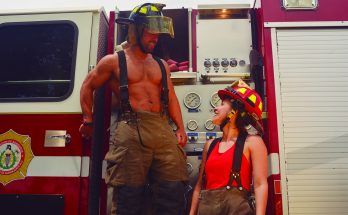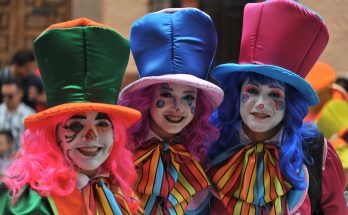By Francisco Peyret
The Day of the Dead is a Mexican celebration whose origin dates back long before the arrival of the Spaniards. There are records that this Mexican festivity was celebrated in Mexica, Mayan, Purépecha, and Totonaca communities. With the arrival of the Spaniards, the celebration continued but in a different form, mainly due to the influence of the Catholic religion in the indigenous communities.
In San Miguel de Allende it has always been a tradition that on November 1, the people would soberly set up their altars and place offerings in some neighborhoods of the city and in the Jardin Principal (main square). Traditionally on November 2 families visit the cemeteries and spend time with their deceased, bringing flowers and offerings. In the past during these dates, San Miguel was not a favorite destination for travelers who seek to enjoy this tradition. So what happened that caused San Miguel to become one of the most sought after destinations to celebrate the Day of the Dead?
From my point of view, San Miguel always had a beautiful, colorful, and multifaceted celebration, but I do believe that events that occured during the last few years that catapulted it into being one of the 10 best destinations to celebrate Day of the Dead, according to México Desconocido magazine. In past articles, we noted that the image of the Catrina has boosted the Mexican Day of the Dead worldwide, even though the Catrina (Garbancera), created by artist José Guadalupe Posada in 1910 was intended as irony to poke fun at the women of his time who aspired to be—and dressed up to emulate—high-society women garbed in French fashion style. He did not do it thinking of the celebration of the dead, but in a process of syncretism, Mexicans, and later foreigners, took the Catrina as a global figure of the Mexican Day of the Dead.
An event that has definitely influenced this recent trend is the Catrinas Parade, which celebrates its 21st anniversary this year. Although it is somewhat confusing because different contingents of the parade depart from different parts of the city, one of the most recognized parade routes is the one that leaves from the Rosewood, with a final destination at the Jardin Principal, where it no longer matters where you come from. What matters is to enjoy the images that emanate from the celebration. Year after year, these parades have grown considerably. Last year was spectacular. In the midst of the pandemic (it just seemed that we were playing with death), the videos and photos from the celebration appeared all over the social networks, nationally and internationally.
Grettel Chazaro, organizer of this parade for 10 years, told me that it was her father, Sergio Chazaro, who 21 years ago began to organize these parades. First he and his family and friends started dressing up as Catrinas, with the idea to create a counterbalance to Halloween, which was on the rise. Year after year, the parade grew, and it was in this way that somehow, thanks to Mr. Chazaro, the image of the Catrina was imposed in San Miguel. Currently, the city has several parades. Universities, neighborhoods, and the government itself organize their own caravans. For Grettel Chazaro, the most important thing is that they are managing to preserve and enhance this tradition, in addition to helping the foreign community to live and understand the celebration of Day of the Dead. This is how a small family group began to mold a parade that today occupies the whole town.
On the other hand, 10 years ago, the controversial Festival de la Calaca (Calaca Festival) was born, which among multitudinous parties, public events, and artistic exhibitions became the final impetus for the whole community to launch a series of initiatives and celebrations that have transformed San Miguel into a unique place to celebrate the Day of the Dead. Evidently we are far from being Patzcuaro, Michoacan, but it is logical that with a community where San Miguel residents, Mexican, and foreigners have mixed, we have a very unique result.
Talking to Klaudia Oliver about the origin of La Calaca, she says that the idea came about in 2010, when she discovered that abroad, the image of Mexico was deteriorating thanks to concerns about security, and she thought it was necessary to create projects to change this perception of Mexico, which, from her point of view, has been unfair in recent years. Klaudia, at that time, thought that Mexican traditions were the best pretext to confront a one-dimensional vision of Mexico. That was how, with other friends like Veronica Pittman and Brigham Golden, they decided to create the Calaca Festival. The original idea was to create a participatory festival where artisans, artists, traditionalists, cultural promoters, and entrepreneurs would create a series of activities around the celebration of the Day of the Dead.
For a while we saw artists like Spencer Tunick, who took images of our celebration to international media. Locally, we have enjoyed the work of graffiti artists, artists, and artisans with relevant results. Klaudia tells us that in 2014 she met Michael Frederickson, who was involved in the production of the movie Coco (2017) and seemed to take some ideas from San Miguel to bring to the screen. We only need to remember how the parties with DJs of the Calaca were to realize that the Coco movie has a direct reference to these events.
It is very likely that my more traditionalist friends do not agree with my notes, but I believe that we do not always like the initiatives and often less the results, but in the whirlwind of generational mixes, fashions, and trends—between a traditional past and a globalized present—things happen. For now these two events have blended into the sea of activities that San Miguel generates around the Day of the Dead, but what else could we expect from a town that loves to have fun, dance, dress up, party, and make its own. The kid likes to make noise, and they lend him a maraca!




